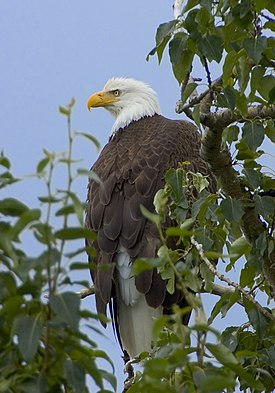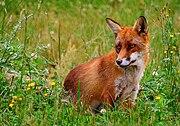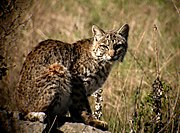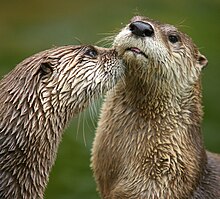
This energy pyramid shows how the sparrowhawk is having to work harder for the energy it needs than a blackbird, snail, and earthworm, even though they eat a fraction of the amount. The energy passed on from organism to organism while running the course of the food chain (pictured below) decreases as the pyramid goes up.


- Grass, seeds, and acorns are the producers.
- The rabbit and the mouse are the primary consumers.
- The fox and the owl are the secondary consumers.










 Moose
Moose 

 Wolverine
Wolverine 